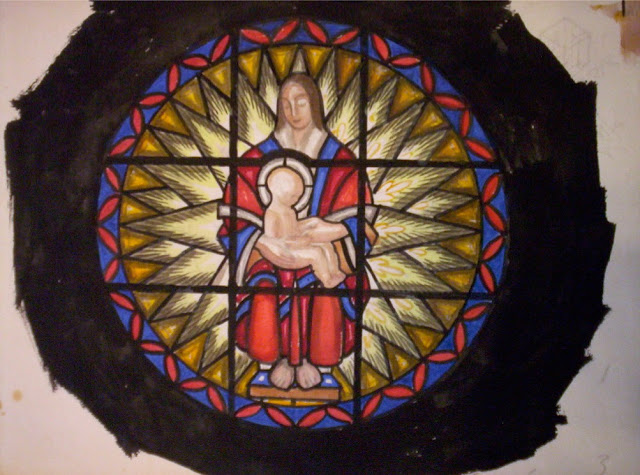The Daily Valdemar No. 52: May 4
Today marks the 75th anniversary of the liberation of Denmark at the end of World War 2. Valdemar Andersen did not live to experience the war, but while we are about to place candles in the windows to mark the return of the light, we may ask how Valdemar would define freedom?
 |
| The window seen from the altar. (Photo: LCL) |
When he was given the opportunity to create symbolic imagery for a new-built church - not one with a history of a 1000 years, but something to make his own within the realm of Christian iconography - and money was lacking so a solution had to be found - he created a rose window of one meter in diameter to be placed behind the altar. This is where the light floods in and the eye is lead up to it from across the cathedral-sized nave.
The sketch above is one in about four to get the details right, especially the outer red/blue ring. The black wash around it is there to help the architect Ejnar Packness to get a sense of the effect. Colour is solid on paper and hard to decipher, but Valdemar kept assuring Ejnar Packness that he should trust him; the effect would be right once the window was in place.
One aspect did not change through the process of getting every detail in place. The subject was his Juliane and their son Ib, and her features and his rounded back of the head are detectable in the church room. Ib was studying architecture at the Royal Academy by then, but to his father this was his life.


